Australian Tropical Rainforest Plants - Online edition
Cinnamomum camphora (L.) J.Presl
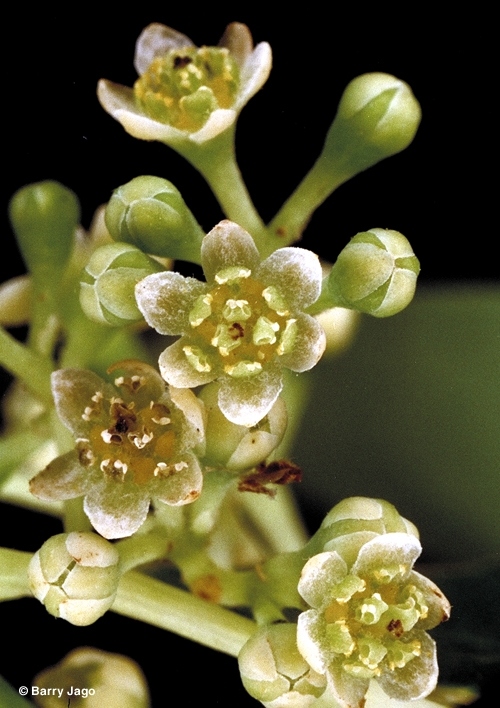

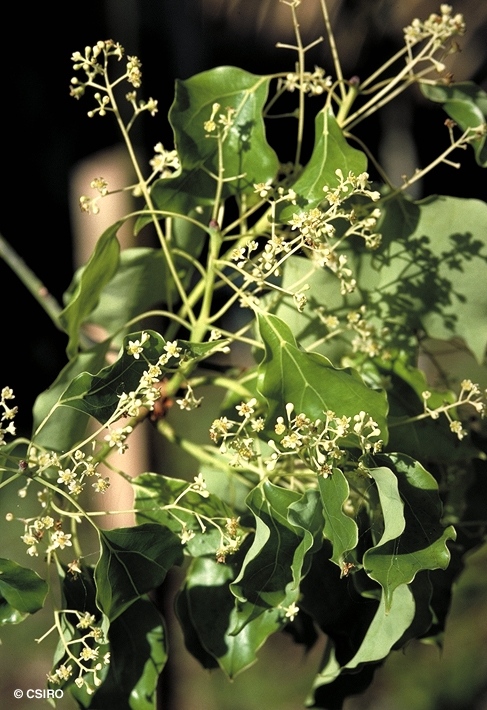
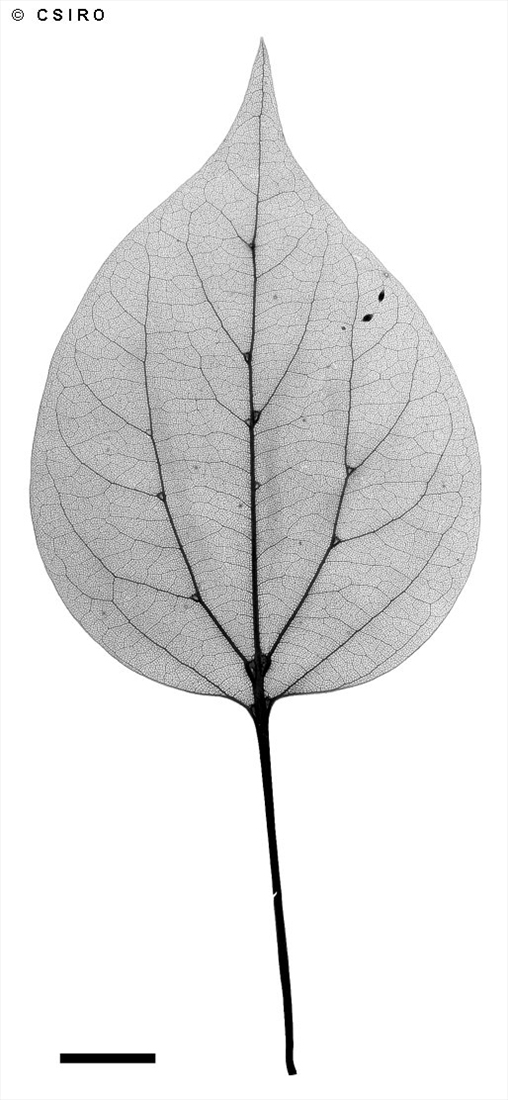
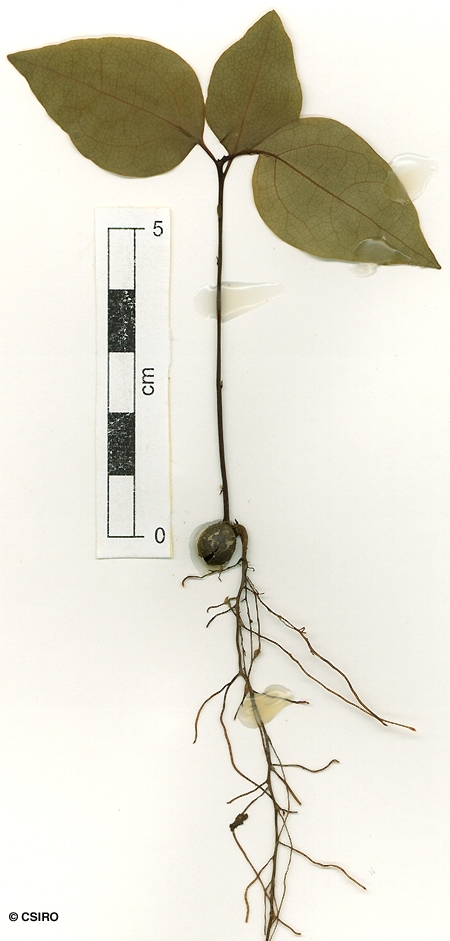
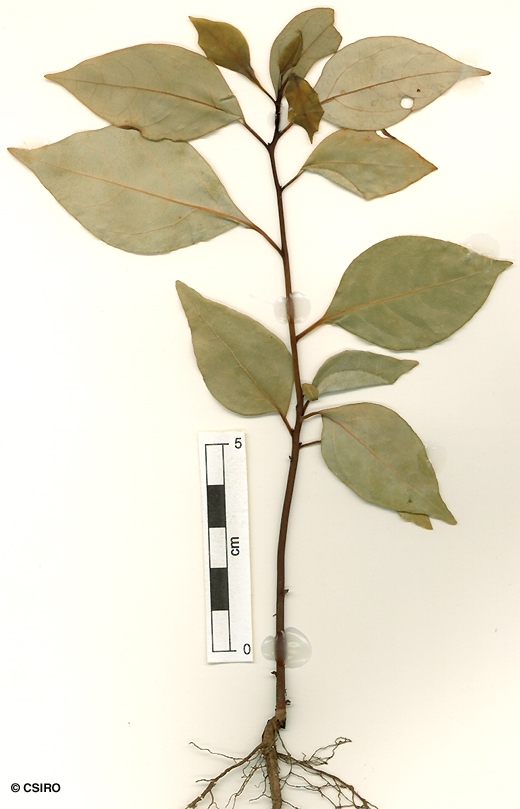
Berchtold, F. von & Presl, J.S. (1825) O Prirozenosti Rostlin 2: 36, t.8.
Camphor Tree; Laurel, Camphor; Japanese Camphor Tree; Camphor Laurel
Usually a definite camphor odour in the blaze. Blaze often with a few sparse layers.
Twigs angular, glabrous. Leaf blades about 5-8 x 2.5-4.5 cm, glabrous, glaucous on the underside. Domatia are foveoles, which are raised on the upper surface of the leaf blade but it is difficult to find an opening in the foveoles on the underside of the leaf blade. Small oil dots just visible with a lens, usually 1 or 2 per reticulation. Terminal bud enclosed in scales. Petiole about half the length of the leaf blade. Crushed leaves emit a strong odour of camphor.
Tepals about 1-2 mm long. Stamens nine (six opening inwards and three opening outwards). Staminodes three.
Fruiting receptacle or cupule lobed at the apex. Fruits about 8-9 x 8-10 mm when ripe.
At the tenth leaf stage: leaf blade not prominently 3-veined, slightly glaucous on the underside; oil dots very small, sometimes difficult to see with a lens. Seed germination time 24 to 104 days.
An introduced species originally from China, Taiwan and Japan, widely cultivated in Australia and now naturalised in NEQ (on the Atherton Tableland), CEQ, south-eastern Queensland and northern New South Wales. Altitudinal range in NEQ from 700-1000 m. Grows on farmland, in rain forest regrowth and wet sclerophyll forest.
This species was the original source of camphor. Fruits of this species are a very popular food with White Headed Pigeons (Baldy Pigeons) and they will even seek out the old endocarps on the ground long after the fruit has ripened and fallen. Currawongs are also fond of the flesh and are generally blamed for the spread of this species. C. camphora is generally regarded as a pest species in northern New South Wales and south-east Queensland. There is ample evidence that it is assuming a similar role on the Atherton Tableland but it is not yet quite as obvious. The timber of C. camphora is quite useful as a cabinet wood but the patterns in the grain tend to be garish and not universally admired.
Food plant for the larval stages of the Common Red-eye, Macleay's Swallowtail, Blue Triangle and Tailed Emperor Butterflies. Common & Waterhouse (1981).
This species produces a number of useful materials with medicinal properties. The main products are camphor and camphor oil. Most camphor on the market today is manufactured synthetically.
The timber is valued by many people for its insect repelling properties.
Camphor and camphor oil can cause skin and eye irritation.
Although native fruit-eating pigeons seem to enjoy the fruits and seeds of this species, some dire consequences have been alleged, viz. sterility in the birds feeding on them.





